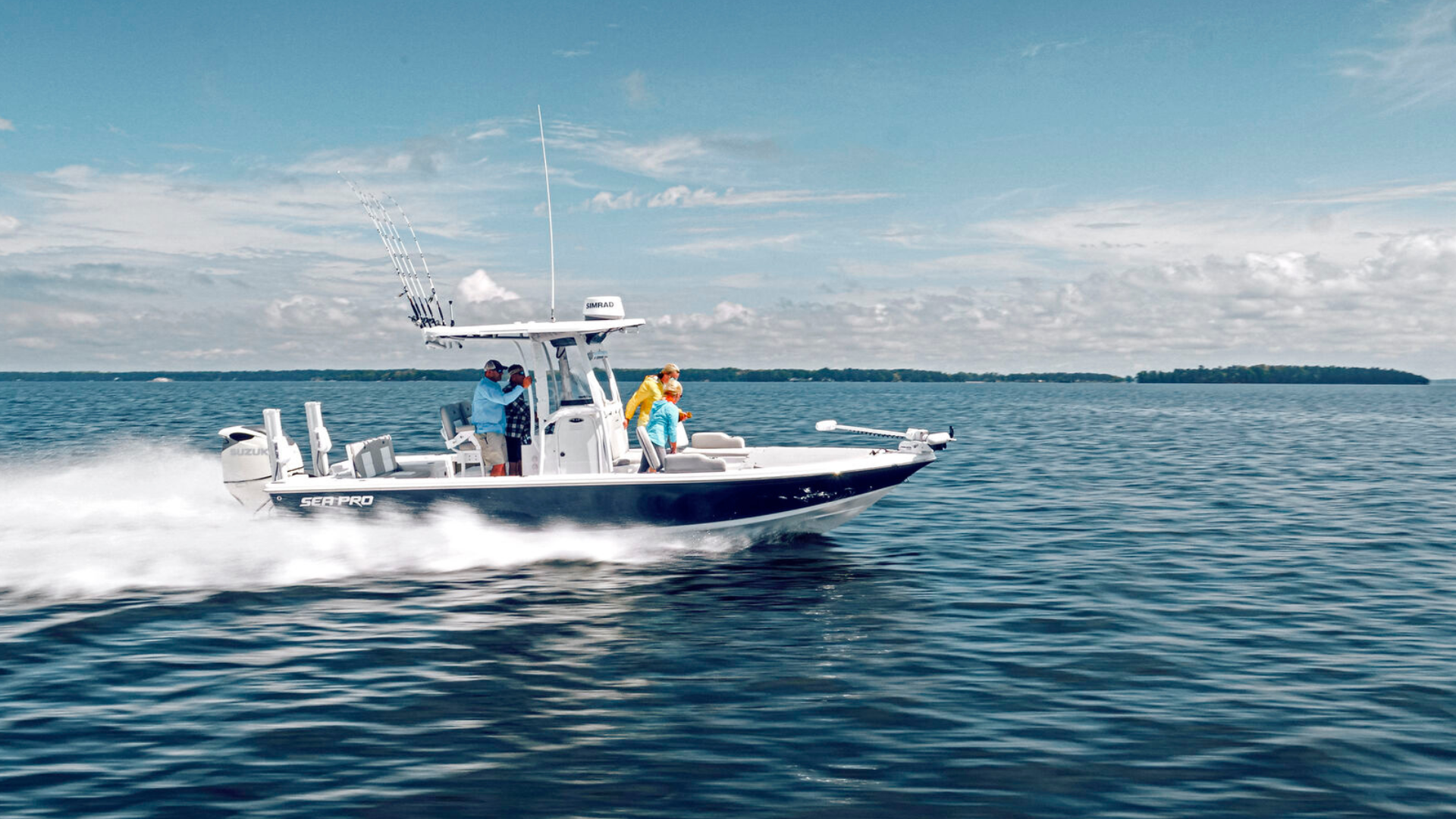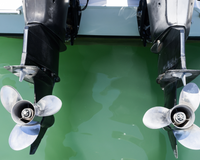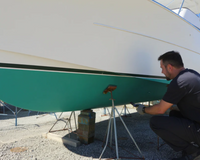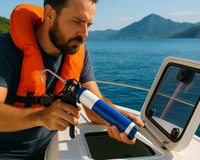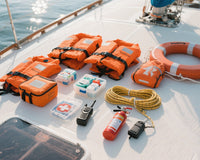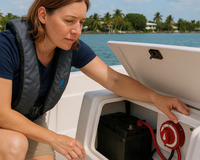Morse / Teleflex
Morse and Teleflex were bought by SeaStar Solutions and their brand names were discontinued, but many products are still available under the SeaStar Brand Name. SeaStar was recently purchased by Dometic. Many boaters need to replace their legacy Teleflex / Morse cables and control parts. Below is a cross-reference guide.
| Original Cable Part Number< | SeaStar / Uflex Replacement Part Number | |||
| ROTARY CABLES | ||||
| Morse / Teleflex 304411-000-Length or 312020 URC or SSC 290 Command 290/OEM Cable | M66 - SafeT-Power Assist NFB 4.2 Rotary | |||
| Morse / Teleflex 304415-000-Length or 304411 TRC | SSC72xx(xx=Cable Length) or SSC61xx(xx=Cable Length) | |||
| Rack Cables | ||||
| Morse / Teleflex 300001 or 300620 Command 200/OEM | SSC130xx (xx=Cable Length) Obsolete | Use Uflex M86 | |||
| Morse / Teleflex 300002 or 300620 Command 200 | SSC130xx (xx=Cable Length) Obsolete | Use Uflex M86 | |||
| Morse / Teleflex 300619-000-Length or 300620/300619 Command 200/OEM Galv. | SSC130xx (xx=Cable Length) Obsolete | Use Uflex M86 | |||
| Morse / Teleflex 300620-000-Length or 300620/300619 Command 200 SST | SSC130xx (xx=Cable Length) Obsolete | Use Uflex M86 | |||
| Morse / Teleflex 300962 Command 250 or 312020 URC | SSX176xx No Assist or SS137XX w/ Power Assist | |||
| Uflex M47 | M66 | |||
| Uflex M66 | Safe-T® Quick Connect NFB Helms | |||
| Teleflex SSC-72 Big-T® & Safe-T® | Teleflex Safe-T Quick Connect NFB Helm SSC-62 | |||
| Teleflex SC-106 Big-T® & Safe-T® | SS51xx No Power Assist or SS141xx w/ Power Assist (Need SA27620P Converter) | |||
| Teleflex Safe-T® Quick Connect NFB Helm SSC-61 |
Teleflex Safe-T® Quick Connect NFB Helm SSC-62 |
|||
| Acco 56-8724 or Mercury Ride Guide 309273 Command 290 System | SSC137xx (xx=Cable Length) Safe T Quick Connect | |||
| Acco 56-8263 Steermaster Mark III 309273 Command 290 System | SSC137xx (xx=Cable Length) Safe T Quick Connect | |||
| Acco56-8226 or Steermaster Mark III 309273 Command 290 System | SSC137xx (xx=Cable Length) Safe T Quick Connect | |||
| DetMar 4-440 Round Rack or Teleflex 309816 Command 200 System | SSC130xx (xx=Cable Length) Obsolete | Use Uflex M86 | |||
| DetMa 4-200 Square Rack or Teleflex 309816 Command 200 System | SSC130xx (xx=Cable Length) Obsolete | Use Uflex M86 | |||
| Mercury C-11111 Mercury Ride or Teleflex 309816 Command 200 System | SSC130xx (xx=Cable Length) Obsolete | Use Uflex M86 | |||
| Mercury C-34451 -Mercury Ride Guide or Teleflex 309816 Command 200 System | SSC130xx (xx=Cable Length) Obsolete | Use Uflex M86 | |||
| Mercury C-76043 Mercury Ride Guide or Teleflex 309816 Command 200 System | SSC130xx (xx=Cable Length) Obsolete | Use Uflex M86 | |||
| Mercury C-76876 Mercury Ride Guide or Teleflex 309816 Command 200 System | SSC130xx (xx=Cable Length) Obsolete | Use Uflex M86 | |||
| Mercury C-11110 Mercury Ride Guide or Teleflex 309816 Command 200 System | SSC130xx (xx=Cable Length) Obsolete | Use Uflex M86 | |||
| OMC 1719 Rack & Pinion or Teleflex 309816 Command 200 System | SSC130xx (xx=Cable Length) Obsolete | Use Uflex M86 | |||
| OMC 3805/200 OMC Rack & Pinion or Teleflex 309816 Command 200 System | SSC130xx (xx=Cable Length) Obsolete | Use Uflex M86 | |||
| SeaStar Solutions / Teleflex SSC124xx Rack and Pinion Cable | Uflex Rack And Pinion Steering Cables | |||
| Complete Rotary Steering System | ||||
| Morse 309273-000-Length or Command 290 Kit | SSC137xx (xx=Cable Length) Safe T Quick Connect | |||
| Morse 311921-000-Length or Command 290 NFB Kit | SSC147xx (xx=Cable Length) NFB 4.2 | |||
| Complete Rack Steering System | ||||
| Morse 309816-000-Length or Command 200 Kit | SS141xx (xx=Cable Length) Back Mt Rack or SS151XX NFB Back Mt. Rack | |||
| Morse 308664-000-Length | SSC124xx (xx=Cable Length) | Obsolete Use Uflex M86 | |||
Archive of Information on Morse Mechanical Steering Systems Provided by Manufacturer
Points to Consider When Selecting a Mechanical Steering System
- Steering forces increase considerably when the speed and horsepower of the boat increases. High performance boats often leave and re-enter the water momentarily, creating high shock loads on the steering system. In addition, certain hull designs may have a tendency to lose stability at high speeds, a condition commonly called "chine walk."
- The speed at which instability begins to occur varies significantly among different type boats. A Morse twin cable or hydraulic steering system is generally recommended for boats moving at higher speeds.
- The torque of large outboard motors may cause a boat to veer sharply from a straight heading or make it difficult to bring out of a turn. Mechanical steering systems must have appropriate mechanical advantage for ease of operation, and the steering cable has to be installed free of kinks, sharp bends or obstructions, to permit the boat owner to maneuver the boat readily at all speeds.
- Corrosion of steering cables can lead to stiff operation and complete seizure. The steering cable should be regularly inspected for cracks or cuts. If found, the cable should be replaced. If there are no signs of cracking, the cable output end and the engine tilt tube should be cleaned thoroughly, coated with a quality marine lubricant, then properly reassembled and maintained according to the engine manufacturer's specifications. Corrosive buildup can be minimized through this simple routine maintenance. Whenever possible, the boat builder and dealer should select Morse cables which all have stainless steel output ends to reduce corrosion, especially on boats used in salt water. Even then, if a boat is not going to be used for extended periods of time, it is recommended to completely remove the cable output end from the thru tube and properly prepare for storage.
- The routing of steering cables is also an important consideration. Multiple bends in the cable and small bend radii will contribute to cable backlash and steering inefficiency. Cables should be routed with as few bends as possible and with the optimum radii achievable.
- Excessive cable length results in excess bend radius, contributing to excess back lash and cable inefficiency. If an installation requires a 16 ft. cable, a 16 ft. cable should be used. Do not add unnecessary length.
- Larger boats with displacement hulls and inboard rudders can create steering loads that exceed the capacity of the mechanical steering systems commonly used on runabouts. Hydraulic steering systems are better suited to function under high steering loads.
- Generally Morse mechanical steering systems can be used on boats up to 35 ft. in length, with a maximum working tiller arm load of 300 lbs.
- Some high performance boat engine combinations develop steering instability at high speed. Instability becomes more prevalent in boats faster than 50 MPH. A twin cable system or a Hynautic hydraulic steering system is recommended for these type boats.
- Hynautic hydraulic steering is recommended for all boats, not equipped with power steering, that have a working load of 300 Ibs. or more at the tiller end.
- Maximum steering wheel diameter is 16".
- Morse mechanical steering systems should not be used on boats equipped 'lJith engines that exceed the maximum horsepower rating of the boat.
WARNING
Although Morse Controls designs and manufactures steering systems that meet or exceed all existing industry standards, it should be noted that some high performance boats equipped with high performance accessories such as motor jack plates and high performance propellers can generate steering loads far in excess of 300Ibs. at the tiller end. It is mandatory that boats equipped with high performance equipment or accessories be water tested to insure that steering loads are within safe operating limits. For more information, refer to the instruction sheet or contact Morse Controls.

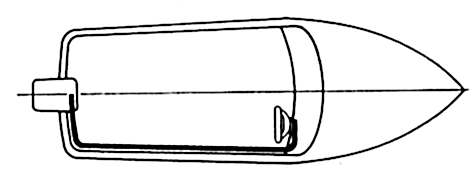
Plan the most direct cable route. Keep the number of bends to a minimum and do not bend the cable less than the minimum specified bend radius.
The trim settings of outboards and stern drives can markedly affect steering loads and boat maneuverability. The motor trim tab should be set in accordance with the motor manufacturer's recommendations. The boat should also be tested for ease of steering through the lull range of motor trim angles since varying trim angles can change steering loads on any given system.
The mounting position of the outboard also affects steering loads and boat handling characteristics. Mounting specifications established by the boat builder and engine manufacturer should be adhered to strictly.

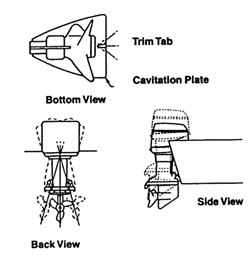
How To Measure for a Steering Cable Installation
An important component of steering function is proper cable installation. Since cable efficiency is reduced by the number of cable bends and the radii of those bends, it is essential to plan the straightest cable path possible. The total of cable bends should never exceed 360°, and no bend should be less than the recommended radius.
If cables must run through ribs, decks or motor well walls, holes should be drilled with adequate clearance. The cable should then be supported with ties or hanger approximately every six feet.

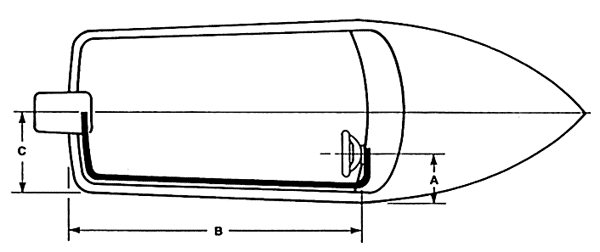
The total of A+B+C is your basic measurement. From that total deduct 4" for every 90° bend in the cable. For installations that are mounted to the transom or splashwell deduct 6". For installations through the engine tilt tube add 6". Round the final total up to the next whole foot.
A = Distance from the center line of the wheel to the gunwale.
B = Distance from the dash to the transom.
C = Distance from the gunwale to the center line of the transom or engine tilt tube.
Total = Basic Measurement
Example: A = 20" + B = 104" + C = 28" = 152"
152" - 8" for two 90° bends = 144"
144" + 6" for a thru-tube installation = 150", Round up to nearest whole foot = 156" (13 ft.)
Example for Transom or Splashwell Mounted Installation:
A = 20" + 8 = 104" + C = 28" = 152"
152" - 8" for two 90° bends = 144"
144" - 6" for transom installation = 138"
Round up to nearest whole foot = 144" (12 ft.)
How to Identify the Proper Replacement Cable
First remove the entire cable assembly from the boat to insure accuracy in measuring.
All steering cable manufacturers stamp a part number and cable length on the outer plastic jacket of each cable. Most are stamped on the engine end of the cable, but some can also be found on the opposite end. If the part number and length are legible, simply refer to the Steering Cable Replacement Cross Reference Index to find the proper Morse replacement cable number and order the length marked on the original cable.
If the Part Number or Length Can't Be Found


If for some reason the part number or length stamped on the outer jacket is not legible or cannot be determined, it will be necessary to examine the system to determine what type cable you have, and actually measure the length required for proper cable replacement.
Morse has developed a quick method for measuring all cables to determine the correct length of the Morse replacement cable. Identify the type system you have from the drawings on the following pages. Then simply measure the length of the outer plastic cable conduit "B" Dimension. Depending on the specific cable manufacturer, the plastic conduit can be red, black, white, grey or green.
Since the actual overall cable length is measured from the center of the steering wheel pinion shaft to the center of the cross hole on the output ram when it's at mid travel, Morse has developed a conversion figure for each system to compensate for the differences between manufacturers' systems.


Take the plastic conduit length ("B" dimension) you have measured and add the prop. er conversion factor (in inches). The conversion factor is found below the Morse Replacement Cables on the following pages. Round up the length to the nearest half or whole foot increment as indicated. The resulting length will be the proper length of the Morse replacement cable you need to order.
Example 1
If you are replacing a Morse Command 200 steering cable and your "B" dimension measures 122", you would add the 30" conversion factor for Command 200 replacement cables.
122" + 30"= 152"
Round up to the nearest foot.
152" + 4" = 156" = 13' Command 200 replacement cable.

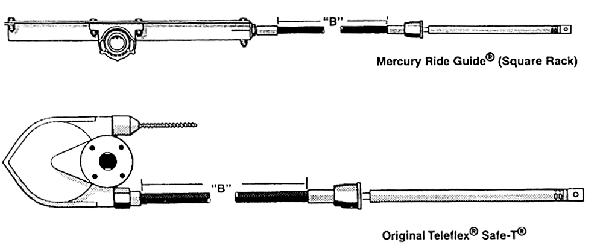
Example 2
If you are replacing a Teleflex steering cable and your "B" dimension, add the 34" conversion factor for TRC replacement cables.
124" + 23" = 147"
Round up to the nearest 1/2 foot.
147" + 6" = 150" = 12'6" TRC replacement cable.
Final Thoughts: Ensure Smooth & Safe Steering with the Right Replacement Cable
Selecting the correct steering and control cable is essential for maintaining smooth handling, maneuverability, and overall safety on the water. Since Morse and Teleflex cables have been rebranded under SeaStar (now Dometic), using a cross-reference guide and proper measurement techniques ensures you get the right replacement for your system.
By following the step-by-step measuring process, considering steering loads, cable routing, and installation best practices, you can extend the life of your boat’s steering system and improve overall performance.

